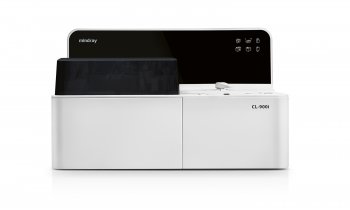© digitale.de – unsplash.com
News • Multimodal analysis
Immunotherapy: tumour microenvironment holds clues to treatment success
An international team of researchers led by Francesca Finotello from the Digital Science Center (DiSC) and Department of Molecular Biology has derived a molecular signature from tumour transcriptomics data that quantifies the main sources of heterogeneity in the tumour microenvironment.
This signature, which the researchers call iHet, offers deeper insights into patients’ responses to immunotherapy and could improve cancer treatments.
“Tumours exhibit a remarkable heterogeneity in their cellular and molecular structure. This diversity makes treatment considerably more difficult,” emphasises bioinformatician Francesca Finotello from the Digital Science Center and the Department of Molecular Biology at the University of Innsbruck, and lead author of a recently published article in the journal iScience. Together with colleagues from the Medical University of Innsbruck, the Universities of Eindhoven and Leiden and University College London, she has developed the iHet signature. This signature is associated with anti-tumour immunity in various types of cancer and makes it possible to precisely predict how well a patient will respond to immunotherapy.

Image source: University of Innsbruck; Illustration: Maddalena Scudellaro and Francesca Finotello
Immunotherapies have become increasingly important in the treatment of cancer in recent years: Instead of attacking cancer cells directly, immunotherapy targets the body's own immune system, supporting it in the fight against cancer. “Unfortunately, it is very difficult to predict whether a patient will respond to immunotherapy or not. This is also due to the heterogeneity of the tumour microenvironment, and this is precisely where we come in,” says Finotello.
In the current study, the researchers led by Finotello used a systems biology approach to analyse the heterogeneity of the tumour microenvironment. They analyzed transcriptomic data from lung cancer samples, specifically non-small cell lung carcinomas, from more than 1,000 patients. Using a special method called Multi-Omics Factor Analysis (MOFA), they were able to identify the main sources of heterogeneity in the tumour microenvironment. “We first derived some interpretable, high-level features from these samples that inform us on which cell types are present and which transcription factors and pathways are active in the tumour microenvironment. We then used MOFA to determine which features vary most within and between tumours and derived the iHet signature. By analysing more than 6,000 patient samples, we were able to show that this signature is also conserved in other types of cancer and is associated with cancer immunity,” explains the bioinformatician.
A significant aspect of the current work is the improved predictive accuracy of potential treatment success, particularly through the integration of digital pathology data to distinguish in the iHet signature “good” mechanisms – which underlie anti-cancer immune activity – from “bad” mechanisms – i.e. negative feedback mechanisms that arise as a response in the tumour to keep our immune system in check. “We specifically used digital pathology data to correct for features in the iHet signature that are associated with the exclusion of immune cells from the tumour,” explains Francesca Finotello. “An important contribution – in addition to the prediction of patients’ clinical outcome – is the interpretability of the signature, which opens the door to more in-depth analyses of the factors that determine the success or failure of immunotherapy and that could be targeted to improve the clinical efficacy of therapies.”
Source: University of Innsbruck
11.09.2024











